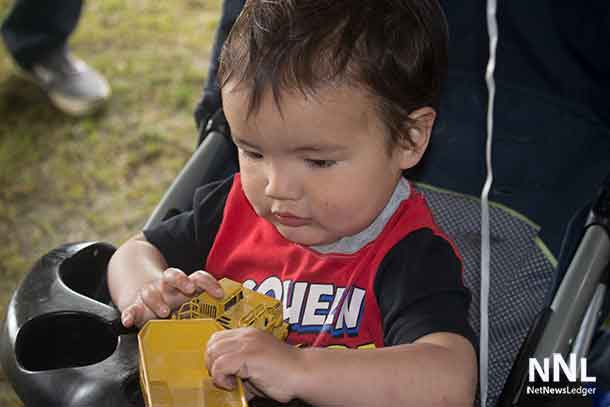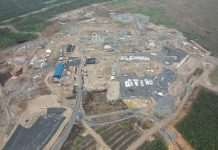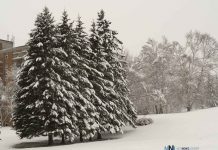
by Xavier Kataquapit
THUNDER BAY – Today is one of those really dangerous times to travel on the road in Northern Ontario. The weather is causing great problems all along Highway 11 from North Bay to Thunder Bay with freezing rain being reported as the temperature hovers around 0 degrees Celsius.
For my people, the Cree from Attawapiskat and along the shores of James Bay this kind of weather is terrible. We depend on the winter road for the transportation of goods to remote First Nations up the coast and when the weather warms up prematurely in the middle of winter it creates huge problems to maintain the road. In recent years as a result of global warming, I have watched as our winters here up north are warming up. When I was a boy 30 years ago and a teen 20 years ago I travelled on the winter road in tractors, trucks and by snowmobile on the land and frozen waterways. The winters were always very cold back then and a mild spell was rare but these days it is becoming the norm. That makes life difficult for remote First Nations up the James Bay coast and for the mining operation DeBeers, Victor Diamond Project.
In my conversations with Elders from up the coast they tell me that the weather has changed and winter shortened dramatically in the past 20 years or so. They worry about the affect this is having on the land and the creatures that live on it. Many are also worried about the fact that when we can’t use the winter road at times it makes the cost of living jump for everyone on the coast. In the winter people can haul tons of provisions like food, milk and consumer goods by transport on the winter road but when that is not possible then all goods have to be shipped by air or during a short window in the summer by barge on James Bay.
The warmer and shorter winters are putting a lot of pressure on First Nations and road work businesses to keep up with the winter road maintenance. We are all at the mercy of the weather. Perhaps some day in the future there will be a road or rail line running up the coast but to do so means the approval of more development. There are pros and cons to that idea but generally I hear from most people up the coast that they want careful and respectful development in terms of resource projects. I know that some people are concerned about Debeers and their Victor Diamond Operation and plans to consider expansion in the area but most people I talk to see careful exploration and development as something much needed for our First Nations.
When it comes to deciding what is best in terms of development on our lands, our First Nation leaders, Elders and community members are the ones to make these choices. Of course we need to do this with the help and support of government experts and representatives in terms of environmental and conservation concerns but the final word is ours. We can not and will never appreciate outsiders making any of these decisions for us whether through lobbying or the courts. They have not lived and or not living our lives.
I look at the good things that have been happening in and around Timmins and Kirkland Lake with agreements that have involved First Nations and resource developers with environmental and conservation concerns addressed in projects that move ahead. There is motivation, desire and technology to keep our respect and care for the land and waters while allowing our First Nation communities to move ahead with sharing of the resource profits, employment, training and business development. I would never suggest that any development go ahead on the traditional lands I grew up on and that provided for the survival of my people without knowing that a negotiated process would protect our land, waters and animals as much as humanly possible.
I know that it is possible to produce exploration and resource projects while still honouring and caring for Mother Earth. Yes, it costs more money to do it right and yes there has to be a meeting of minds at the table from First Nation leadership with Chiefs and Councils, Elders, resource developers, government representatives and environmental and conservation experts. That is all entirely possible. It involves coming to the table and finding trust and common ground that will take us all into a better life. Or we can watch our children grow up like I did thinking that my life would be hopeless and that I could never really have the kind of plentiful and comfortable life that all of the people on television and in communities to the south enjoyed. We could not afford nutritious food that was good for us, our health care services were limited, our housing was always in crisis, we did not and still in many cases do not have clean water and the opportunity for jobs and education was a challenge. I have seen too many young people living with no hope and living a life full of tragedy involving drugs and alcohol. We need to move ahead and negotiate better lives for our future generations now.
Xavier Kataquapit
www.underthenorthernsky.com






